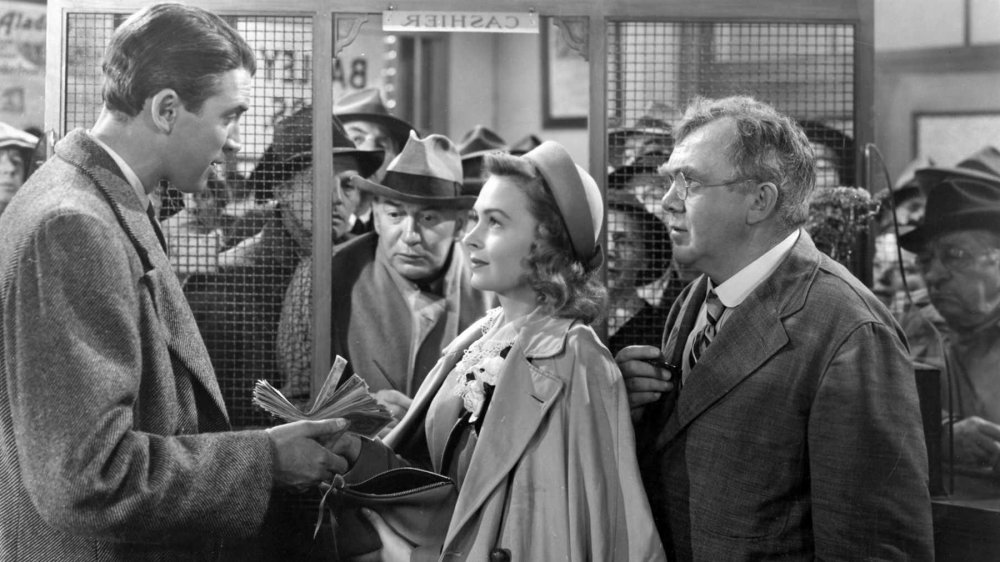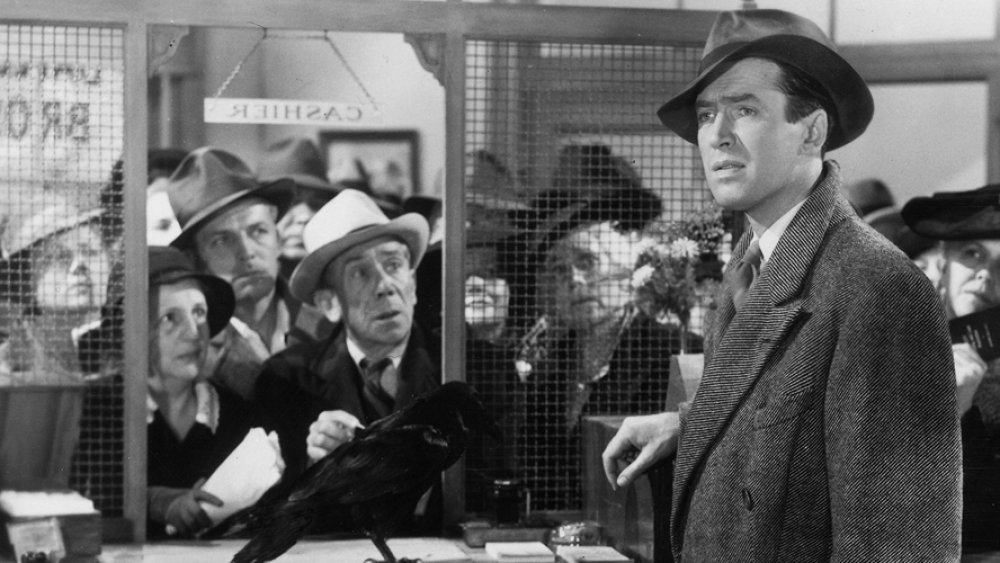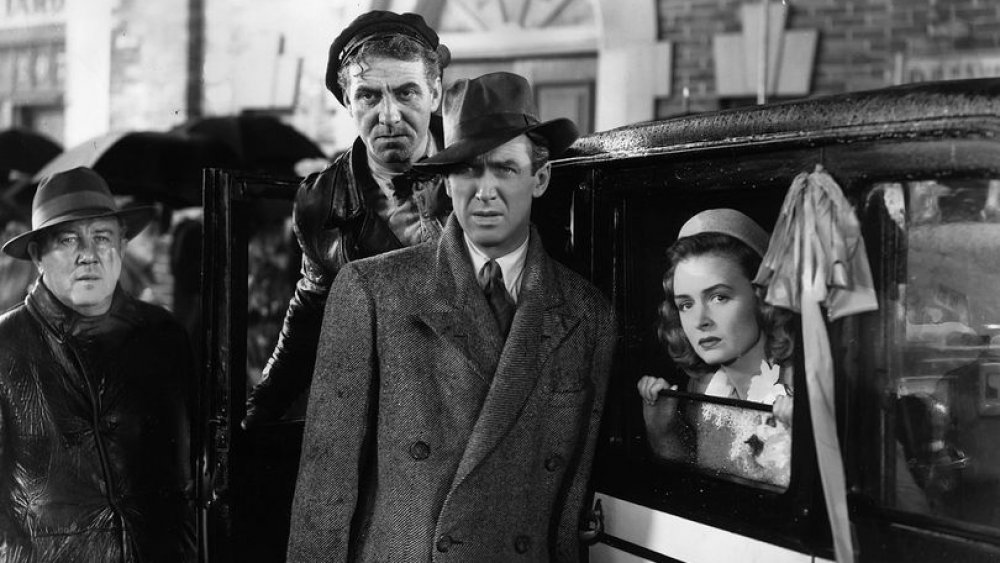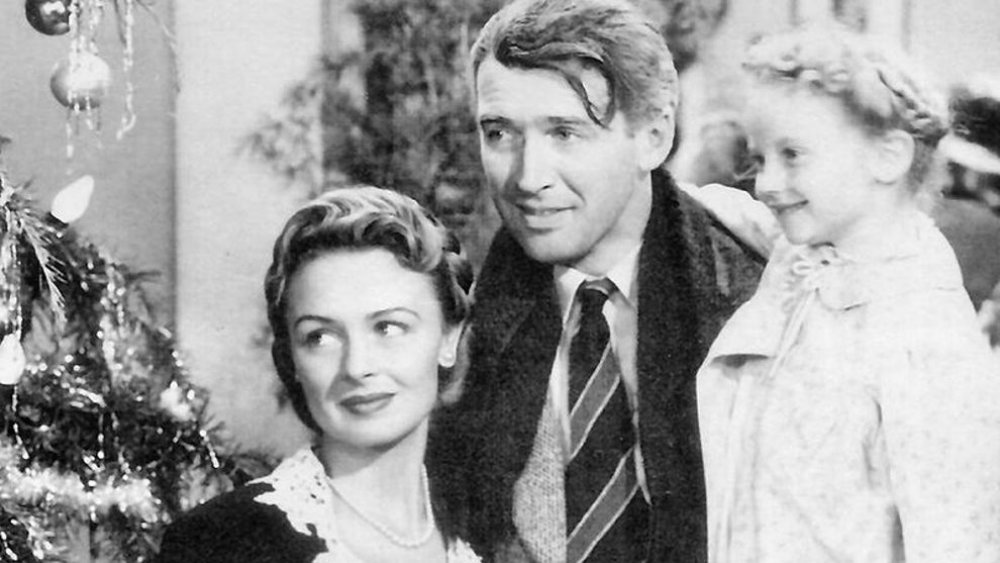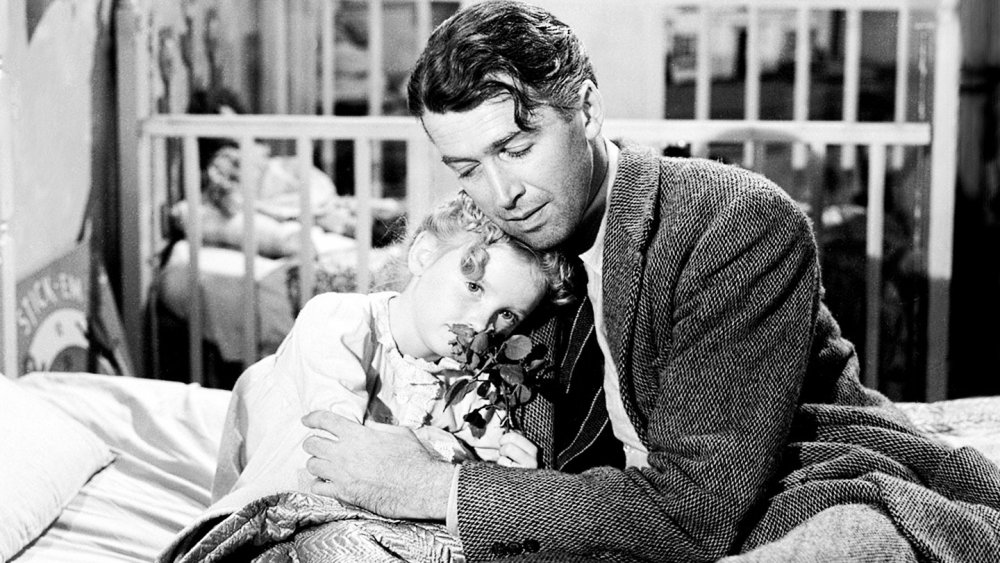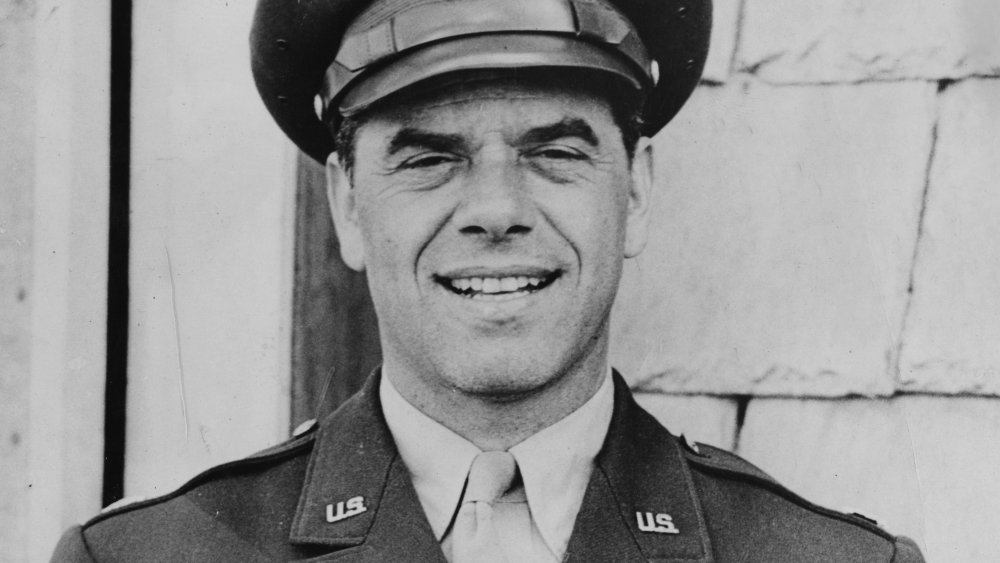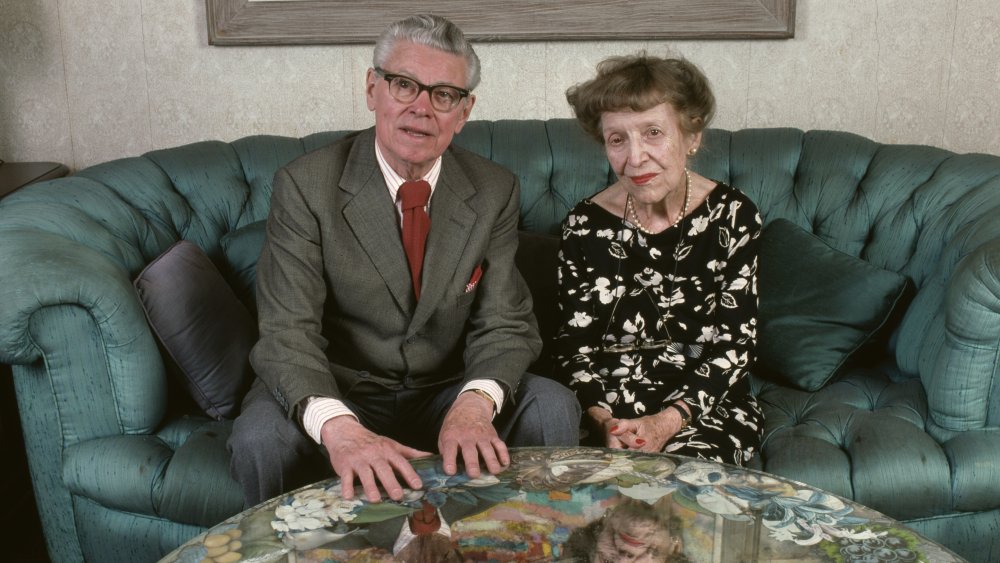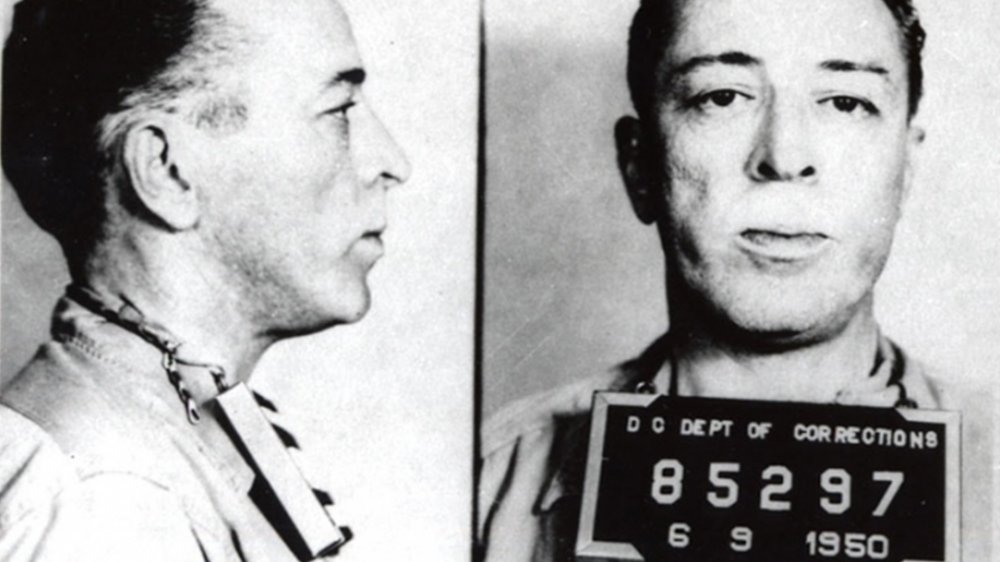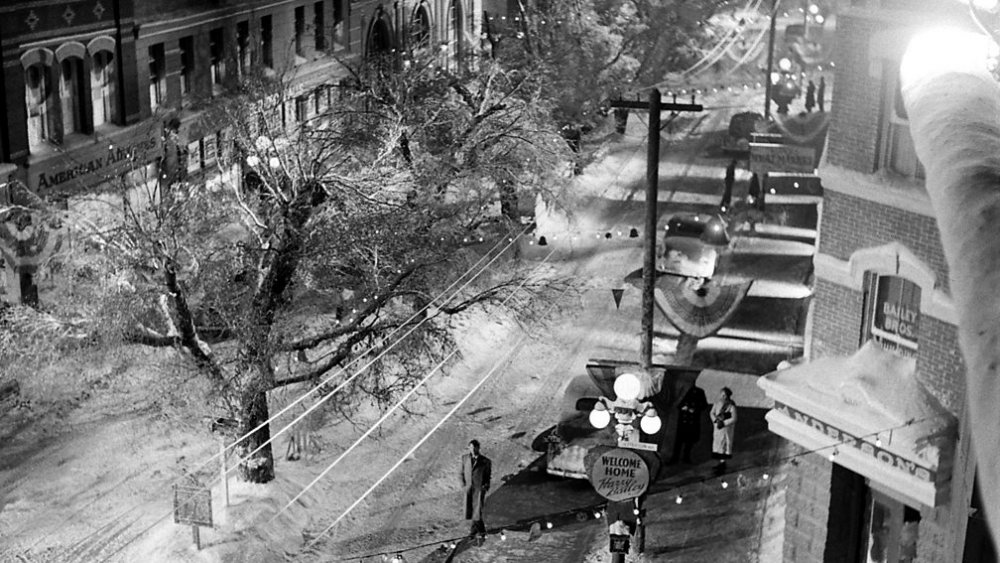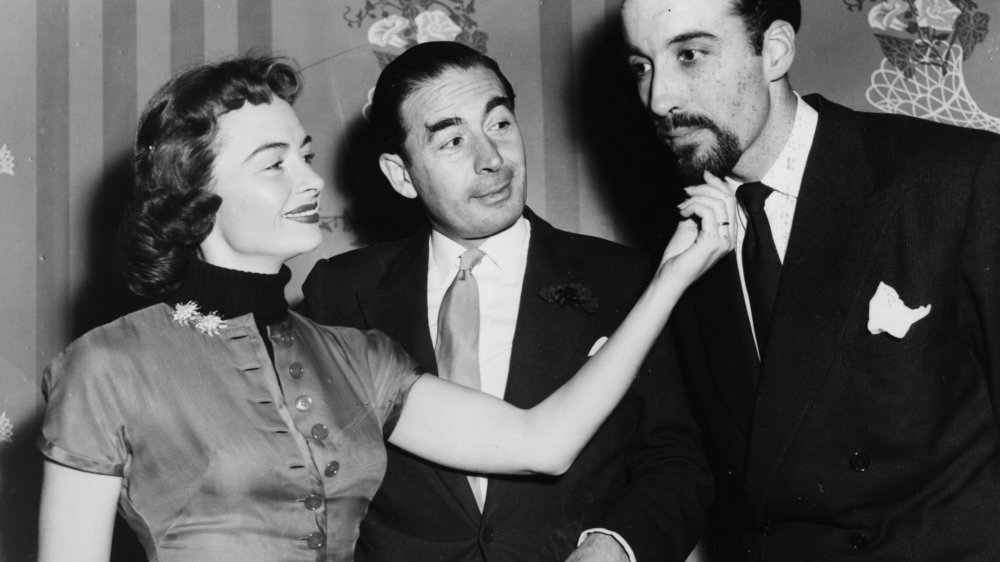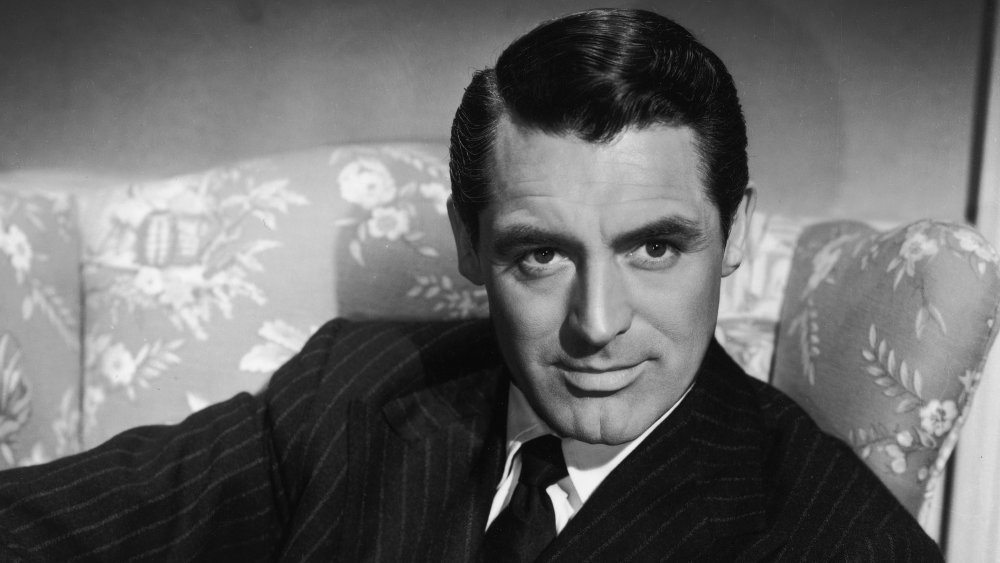Things You Didn't Know About It's A Wonderful Life
It's a Wonderful Life is one of the most highly regarded, quintessential films in America's canon. It has become a tradition for many families to watch the film annually over the holidays. It's on numerous Top 100 lists of the best films of all time, including ranked 11th on the American Film Institute's 100 Greatest American Movies and ranked 15th on the Directors Guild of America's 80 Best-Directed Films list. Its universal themes, and at times dark subject matter about a man struggling during one of America's bleakest eras, have become as common to the American experience as apple pie.
The film's message has resonated throughout generations. As Vox writer Emily VanDerWerff so eloquently states, "the film is a message in a bottle from 1946: Hold on, and don't give up."
The Frank Capra classic, starring screen icons Jimmy Stewart, Donna Reed, and Lionel Barrymore may be mandatory viewing for 20th century film curriculum now, but it wasn't always a roaring, beloved success. On the contrary, in fact. The film was met with suspicion by the FBI, and failed at the box office during its initial release. Here are a few facts about It's a Wonderful Life.
It's a Wonderful Life was a box office failure
It's hard to imagine that It's a Wonderful Life was not appreciated by audiences upon its arrival. The film's colossal box office failure put director Frank Capra $525,000 in debt, resulting in Capra's production company going bankrupt. In 1946, Jimmy Stewart's career hit a low point. Stewart's MGM contract had run dry, and he was experiencing post-traumatic stress disorder thanks to the three years he spent defending the western world in World War II. "I was just a little bit scared," Stewart recalled saying years later about his return to the homeland.
The screenplay for It's a Wonderful Life wasn't faring much better. RKO Pictures was set to produce the project, but three screenplay passes later by three different writers, development hell led to the project being shelved. Until Frank Capra came on board. Capra was determined to get Jimmy Stewart back in the saddle. He pitched It's a Wonderful Life to a less-than-enthusiastic Stewart. But he needed to work again, so Stewart signed on.
Unfortunately, critics were also less than enthusiastic. The New York Times critic Bosley Crowther claimed its sentimentality made it weak. Perhaps its audience was jaded after suffering through two world wars and a depression, and sentimentality wasn't in the cards.
For a few decades the film went unappreciated, and was so much as forgotten. Until...
The reason everyone's seen It's a Wonderful Life on TV
Hailed as the most-watched film on television during the Christmas season, It's a Wonderful Life continues to smash network ratings year after year, 74 years after its debut. Millions tune-in on Christmas Eve as a sort-of tradition, much like the original Twilight Zone series marathon every New Year.
But how, you might ask, has this film graced our television screens since the 1970s? In a nutshell, there's a really boring copyright act that "governs copyrightable works created before 1964." The 1909 Act basically makes it hard for a film to stay out of the public domain after a 28-year hiatus. Since It's a Wonderful Life fell off the radar for decades, its public domain gave it new life. Twenty-eight years after the film's initial release, television studios began airing the film every year.
"I remember one Christmas Even when it was in the public domain, my wife and I played TV roulette with it," said film historian Leonard Maltin to Vanity Fair. "We literally kept changing channels and came upon it in different stages of its progress. And you can't not watch. You can't turn it off."
The very irony that a film had to fail and disappear in order for it to become the most watched holiday film in American history next to Home Alone and National Lampoon's Christmas Vacation shouldn't be lost on anyone.
It's a Wonderful Life reveals dark truths about the American banking system
It's a Wonderful Life sheds light on some economic insecurities we tend not to contemplate in everyday life. Like how bank mortgages and loans actually work — or in the film's case — how they can collapse.
It's a financier's worst nightmare. A mob of people show up at your bank, wanting to take all their money out at once in a panic — as if all of their money is physically sitting in a safe in the back room.
One of the film's famous scenes is when a horde of Bedford Falls residents makes a bank run on George Bailey's community bank, which is a real phenomenon where people fear that an institution won't be able to make good on a loan. So they try to withdraw all of their funds instantly. This was a common occurrence during the Great Depression. Poor George Bailey has to use funds saved for his honeymoon to tide over his customers so he doesn't lose their business.
Banks, no matter how large or small, can fail. And the film begs the question of what can happen when a bank has too much leverage – when one loss could deflate an entire institution. Since the crash of 1929, we have seen this happen again during the 2008 Financial Crisis, which led to banks feeling pressure to have more cash on hand in case of a dreaded bank run.
Was It's a Wonderful Life propaganda for The New Deal?
It goes without saying that 1946 was a tidal wave of change around the western world. With World War II officially over, America was on the brink of sweeping reform that would include the installment of socialized programs including welfare, housing subsidies, and social security. America had helped defeat an evil adversary, and the country was ready to leap toward a more equitable future.
Director Frank Capra's films are not known for being subtle. Before It's a Wonderful Life, Jimmy Stewart starred in Capra's Mr. Smith Goes to Washington from 1939, a film about an idealistic senator who attempts to fight political corruption and appeal to our better angels. Similar to Mr. Smith Goes to Washington, It's a Wonderful Life has a certain idealistic earnestness to it. The film's villain is a greedy banker who puts profits over people, and George Bailey comes to learn the powerful value of family and community. In a way, the film is a case study in what American small-town values can achieve. Because of Bailey's selfless acts, he's ultimately rewarded with reciprocation in the end, where his fellow community members more-or-less save him. This plight of the "common man" story was specifically the message politicians like Franklin D. Roosevelt reveled in to promote their governmental vision.
The message was so black-and-white, however, that the FBI grew suspicious.
It's a Wonderful Life Director Frank Capra and the FBI
Jimmy Stewart wasn't the only man who fought in World War II. Francesco Capra, aka director Frank Capra, emigrated to America from Sicily with his family at the age of 6. They settled in Los Angeles, and Capra served in the army during World War I. Capra rejoined the army during World War II. He spent some of that time making propaganda films for the American war effort as a sort of challenge to Leni Riefenstahl's Triumph of the Will Nazi propaganda documentary. Capra served until the end of the war in 1945. The Why We Fight series' main objective was to convince a skeptical American audience on the merits of the U.S. war effort overseas.
Capra, who is a shining example of the American dream, made films about just that: the promise and optimism of American ideals. Which makes somewhat odd that the FBI considered It's a Wonderful Life to be un-American. The FBI believed that Capra and the film's screenwriters were furthering their communist agenda, even going so far as to issue a memo of concern.
The memo, which was part of the over 13,000-pages-long 1947 document "Communist Infiltration of the Motion Picture Industry," claims that the film "represented rather obvious attempts to discredit bankers by casting Lionel Barrymore as a 'scrooge-type' so that he would be the most hated man in the picture." This was the "common trick" the movie industry used, according to the Bureau.
The credited screenwriters of It's a Wonderful Life walked out
Husband and wife screenwriting team, Frances Goodrich and Albert Hackett, grew frustrated with director Frank Capra and eventually walked out before development ended of It's a Wonderful Life. Though their names are in the credits, the duo were less than pleased with Capra. "Frank Capra could be condescending," Hackett said in and interview, "and you just didn't address Frances as 'my dear woman.'"
The team were nearly finished with the script when their agent called, insinuating Capra was putting pressure on them to finish. Frances apparently answered, "We're finished right now," and they never made it to the end. Frances referred to Capra as "that horrid man" and "an arrogant son of a b****."
The writing team also found out through the Hollywood grapevine that Capra was working on the screenplay behind their backs, which was technically against the rules of the Screen Writers Guild.
The pair claimed they never even watched the film until decades later.
Other famous writers contributed to It's a Wonderful Life
Dalton Trumbo was one of the most prolific and discredited screenwriters of the mid-20th century. He and Frank Capra crossed paths during the infamous Hollywood blacklist period. Capra was originally slated to direct the Audrey Hepburn classic Roman Holiday, which Trumbo wrote the screenplay for. (Trumbo would receive an Oscar for the film but was not officially recognized at the time).
Trumbo was one of the Hollywood Ten who were called to appear before the House Un-American Activities Committee (HUAC) for suspected communist activism. Director Elia Kazan and famous playwrights Arthur Miller and Bertolt Brecht were also among the "Ten." The men refused to testify on principle and went to jail. But years before the committee hearings, Trumbo and Capra collaborated on a draft of It's a Wonderful Life. Trumbo would never receive a credit for the film. Trumbo's involvement undoubtedly influenced the FBI's official investigation into the film's motive.
Dorothy Parker, another iconic, well-known writer who was active since the 1920s, script doctored a draft of It's a Wonderful Life. Clifford Odets, a famous playwright turned screenwriter, was also an uncredited name involved with the film's script.
Bedford Falls in It's a Wonderful Life was really Seneca Falls
The idyllic town of Seneca Falls, New York, is thought to have been the inspiration behind the fictitious town of Bedford Falls in It's a Wonderful Life. During the development stage of the film, Capra visited the town. "There's a lot of Seneca Falls in Bedford Falls," said Jimmy Hawkins, who played George Bailey's youngest son, Tommy, in the film, to Country Living. "The bridge alone can tell you a great deal."
Quite possibly the strangest, and starkest, coincidence between the real and fictitious town is the famous bridge where George Bailey considers ending his life. In 1917, Seneca Falls experienced a similar tragedy when a young woman named Ruth attempted suicide on a nearly identical bridge. A teenage canal worker, Antonio Varacalli, came to her rescue, but he tragically drowned in the process of successfully saving Ruth's life. Seneca Falls awarded Varacalli with the Carnegie Hero Medal, and the bridge now has a plaque with his name on it, which Capra surely came across during his visit.
Seneca Falls holds an annual festival dedicated to the film. On It's a Wonderful Life's 70th anniversary, the three surviving actors who played the Bailey children made appearances and signed autographs.
If you or anyone you know is having suicidal thoughts, please call the National Suicide Prevention Lifeline at 1-800-273-TALK (8255).
A new brand of fake snow was created for It's a Wonderful Life
It may be snowing in It's a Wonderful Life, but it was actually shot during a heat wave. So Hollywood had to come up with a creative workaround. Before 1946, fake movie snow was made from cornflakes painted white. The cornflakes were so loud and crunchy that dialogue had to be re-dubbed in post production.
Frank Capra wanted to record live dialogue, so he worked with RKO to develop a quiet fake snow by mixing foamite (used in fire extinguishers) with water, sugar, and soap flakes. The snow acts as almost a character in the film. The aesthetic is pivotal in some of It's a Wonderful Life's most memorable scenes and moments, like when George Bailey walks through a snowstorm as he returns back to reality.
And it only took 6,000 gallons of fake sugary snow to cover the set of Bedford Falls.
Donna Reed wowed cast on set of It's a Wonderful Life
Donna Reed came from humble beginnings as a farm girl in Iowa but landed the role of Mary Bailey at the tender age of 25 over many starlets, including Olivia de Havilland and Ginger Rogers, as a virtually unknown actress.
On the set of It's a Wonderful Life, however, she proved she wasn't just a pretty face. She called It's a Wonderful Life costar Lionel Barrymore's bluff by milking a cow as part of a bet. It was "the easiest $50 I ever made," Reed supposedly uttered.
She was also a good baseball player in high school and even broke her own window glass in the famous scene with Jimmy Stewart outside of The Old Granville House in one take! A stunt professional was set to shatter the window, but Donna insisted on doing it herself.
Reed must have had a pleasant experience making the film, as she later hailed it as her favorite film. Which is impressive considering her 200 plus credits. Both Stewart and Frank Capra have also claimed It's a Wonderful Life as their favorite, with Capra adding that he felt it was the best film he ever made.
Cary Grant was almost George Bailey in It's a Wonderful Life
Cary Grant was originally supposed to play George Bailey. When the film rights were purchased, Grant was slated to star. But as it happens in Hollywood, the script moved through many different hands — and writers — and eventually RKO gave up the rights to Frank Capra, who enthusiastically approached his friend Jimmy Stewart.
Stewart wasn't initially sold on taking the role. He had been overseas fighting in the war, and his attitude toward acting had changed, finding it frivolous. Capra and costar Lionel Barrymore had to convince him otherwise. In author Robert Matzen's nonfiction book, "Mission: Jimmy Stewart and the Fight for Europe," he interviewed fellow soldiers who had flown with Stewart during the war, who believed that Stewart suffered from shell shock and battle fatigue.
"He wasn't afraid of bombs or bullets," Matzen writes in the book. "He was afraid of making a mistake and causing someone to die. That was his endless stress, and that's what ended up grounding him."
It's hard to imagine anyone else but Stewart as George Bailey, and his previous struggles likely only enhanced his understanding of the emotionally heavy role.
It's a Wonderful Life started with a Christmas card
It's a Wonderful Life originated from a 21-page Christmas card, which was technically a short story written by Philip Van Doren Stern titled, The Greatest Gift. The card/story was sent out to Stern's family and friends during the holidays of 1943.
The story was inspired by Stern's dream. The plot of the short story is the film's plot verbatim, about a man named George who contemplates suicide by jumping off a bridge when he comes across a mysterious person who takes him through a fantastical life scenario where he'd never been born. Since Stern failed to get it published, he decided to share it with loved ones instead.
RKO Pictures producer David Hempstead came across the story and paid Stern $10,000 (equal to $124,000) for the rights a mere four months after sending it out. Stern also went on to sell the story to Good Housekeeping in 1945, which was published under the title, "The Man Who Was Never Born."
If you or anyone you know is having suicidal thoughts, please call the National Suicide Prevention Lifeline at 1-800-273-TALK (8255).
